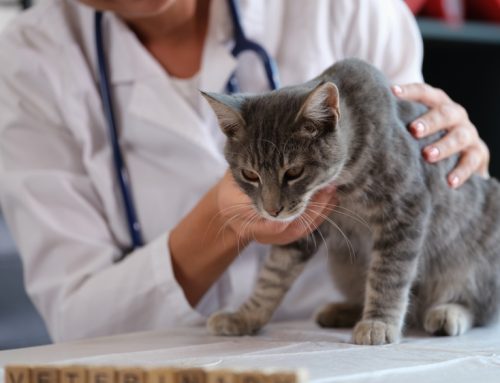Allergies commonly occur in pets and people, but your furry pal’s signs will likely be different from your own. In general, allergies in pets lead to skin inflammation and irritation and other associated problems. Read on to learn how to identify and manage the three main types of pet allergies.
Environmental allergies in pets
Pets’ environmental allergies are typically inhalant, but they can also develop contact allergies. Common environmental allergens for pets include:
- Grasses
- Trees
- Weeds
- Pollens
- Mold spores
- Dust and house mites
- Fabrics or materials (e.g., plastic, wool, synthetic materials)
- Insect bites and stings
- Cleaning chemicals
- Aerosol sprays
- Fragrances
Environmental allergies in pets can occur year round, or flare up during particular seasons. Pollen allergies largely affect pets in the spring and summer, whereas dust mite allergies cause year-long issues that have greater intensity in the winter.
Pets with environmental allergies can display localized or generalized skin irritation and inflammation. Some of the most common signs include:
- Itching
- Red, inflamed skin
- Ear and skin infections
- Excessive chewing, licking, or scratching
- Fur loss
- Hot spots
- Anal gland issues
In some cases, pets with inhalant allergies (i.e., atopy) will also sneeze and have red, watery eyes. However, these upper respiratory signs are more commonly associated with human allergies.
Environmental allergies are often complex to diagnose and manage, and they generally worsen as a pet ages. The most accurate method of diagnosing environmental allergies is through skin (i.e., intradermal) testing, but serum testing can also be performed.
Once you know what sparks your pet’s allergy, take steps to minimize their exposure. This may mean freezing their food to eradicate storage mites, running an air purifier, and wiping pollen off their paws and abdomen when they return indoors. Other allergy therapies for pets include:
- Antihistamines
- Corticosteroids
- Anti-itch medications
- Medicated shampoo
- Ear cleaner and ointment
- Immunotherapy
Flea allergies in pets
Some pets are incredibly sensitive to flea bites and become allergic to the protein in flea saliva. A mere handful of flea bites can make an allergic pet incredibly uncomfortable, to the point of chewing their skin raw.
Pets with flea allergies often display the hallmark sign of a bare hind end. Their skin may be raw, scabbed over, or chronically hairless, because the flea bites cause severe itching and inflammation, especially if the flea population is not kept under control.
A flea infestation in your home and environment can be extraordinarily hard to treat. The flea’s complex life cycle and hardy life stages make them difficult to eradicate, as the adult stage is the most susceptible to treatment but, unfortunately, the adult fleas in your home make up only 5% of the total population, so treatment must be long-lasting to be effective.
To treat pets with flea allergies, you must use an insecticide premise product with residual activity. These product types need only one application to your home and yard, and will continue working as fleas progress to the adult stage and become susceptible to treatment. In addition to premise products, you must treat every household pet, including indoor-only house cats. Every pet requires high-quality, year-round flea prevention to protect the allergic pet from reinfection.
Food allergies in pets

Food allergies are the most uncommon allergy type in pets, but pets can develop hypersensitivities to protein sources. In general, pets develop food allergies to long-term diets, and hearing that a pet is showing food allergy signs after eating the same food their entire life is not uncommon.
If your pet develops a food allergy, the protein in their diet is the likely cause. The most common food allergens in pets include:
- Chicken
- Lamb
- Beef
- Fish
- Dairy
- Eggs
- Soy
- Wheat
Pets rarely develop grain allergies, so grain-free diets are not recommended as a therapy for food allergies.
Food allergy signs in pets are similar to other allergies, but skin inflammation is largely localized to ears and paws. Pets with food allergies often have chronic ear infections, and lick and chew at their paws excessively.
Diagnosing food allergies is challenging, as blood and skin tests are not reliable, and a food trial that lasts 6 to 12 weeks is required. During that time, your pet cannot be given any food, including treats, other than the prescribed diet, which may be a prescription hypoallergenic diet, or a novel protein diet. After completing the food trial, the suspected allergen is reintroduced and a food allergy diagnosis is made if clinical signs reappear. However, pets can be allergic to multiple food allergens, so the trial must be repeated for each suspected allergen.
The only effective food allergy treatment is strict feeding of non-allergenic foods, which may mean you need to limit treats to fruits and vegetables, and avoid many—if not all—commercial diets whose products contain a mixture of various proteins.
Allergies in pets are a lifelong condition that requires an ever-evolving management plan. To help keep your furry pal’s allergies successfully under control, schedule an appointment with our Chiefland Animal Hospital team.








Leave A Comment